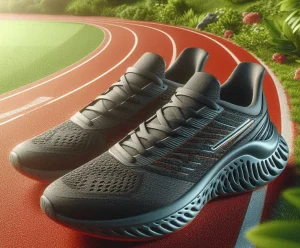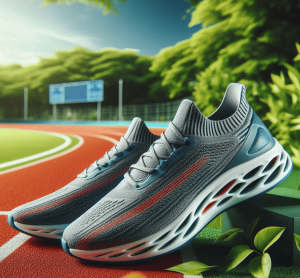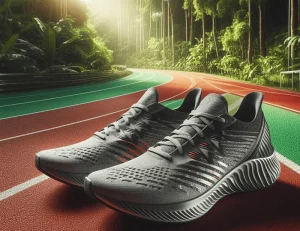Keith Scott is a Certified Athletic Trainer (ATC) through the National Athletic Trainer’s Association and also a Certified Strength and Conditioning Specialist (CSCS) through the National Strength and Conditioning Association
Keith received his Master’s Degree in Exercise and Sports Science with a concentration in Sports Medicine from the University of Arizona. During his 13 years in Tucson, he had the pleasure and opportunity to work with hundreds of athletes each year in the youth, high school and college levels.
Keith focused on injury prevention, post surgical/injury rehabilitation, and Strength and Conditioning. He worked extensively with athletes of all levels and many different sports, with over 15 years working directly with athletes in the trenches. Keith currently resides in Southern New Jersey.
CB: Keith, how do you use your background of athletic therapy when designing programs for people and taking them through their workouts? How might they differ from someone like myself with only a minor background in the area of Rehabilitation?
KS:
I have a very strong background in assessment, so I take a lot more time evaluating range of motion in all major joints (some minor joints too), muscle and tendon strength, joint integrity, and basic movement patterns and mechanics.
I will take a whole session just doing an evaluation sometimes. I also take a pretty thorough history on each person, finding out about previous injuries, chronic problems, pain, etc… and not to forget…the person’s experience level in training.
Once I have a good understanding of the person’s situation I design my programs much like I would a rehab program for someone with an injury. After all, I have yet to meet anyone that does not have problems, imbalances or pain somewhere, so it’s really no different.
I create a “problem list” first and form the program around that. For example, if someone comes in with very tight hip flexors, tight dorsiflexors, and horrible scapular control (like a lot of people that we probably see) those go on my problem list. I create a program around those areas first and work on those things right away. I won’t introduce an exercise in those areas until we correct them or at the very least, are on the road to correcting them.
People that can’t control their hips, or ankles for example, have no business squatting any kind of weight until those things are handled, yet we see trainers, and coaches doing just that everyday.
What I have seen with a lot of trainers and coaches is that this “problem list”, if ever really generated in the first place, gets lost in the program and things never really get addressed that should. Ultimately, the athlete gets injured or never improves. Each program should be different because each athlete is different. Of course this takes more time and effort from the trainer/coach.
All of my programs utilize a lot of hands on work – myofascial work (releasing), teaching of self myofascial work, muscle activation, and hands on stretching (PNF patterns…contract/relax, etc…). I am a big proponent of closed chain proprioception too, for upper and lower extremities as well as joint mobilization techniques and exercises.
I also use a lot more recovery methods with my athletes especially after training sessions. Different types of cold and heat therapy as well as different types of treatment massages and stretching.
CB: what are the typical muscle groups, lifts, and physical abilities that you focus on when training young athletes for sports?
KS:
Assuming that we are talking about high school age athletes first, I use the same type of muscle group training that I would an older athlete. This assumes that there are no major problems that need attacking first.
I work a lot of posterior chain with all of my athletes. Every one of my programs has glute work -extension, abduction, stability, as well as adductor work (which I believe is missed in a lot of programs)
My programs will always have upper extremity pulling exercises included for the posterior chain, and rotator cuff work, especially the external rotators, but a good share of subscapularis work as well…that muscle is overshadowed a lot by the other internal rotators and is extremely important.
I like to train the rotator cuff as a stabilizer more than just as internal/external rotators. Its job is to stabilize first. Here is where I will throw in some closed chain proprioception, PNF patterns, etc..
Along with the pulling and rotator cuff work, I will address scapula stability and function a lot. Sometimes this is just teaching the athlete correct movement of that area. Young athletes are in a perfect place to start to develop correct scapular movement patterns, and stability of that shoulder complex.
This is not to say that I don’t put pushing exercises in programs, because I do, but I certainly don’t think benching needs to be the crux of every program.
CB: What do young athletes really need?
KS:
Young athletes need movement training first…running mechanics, jumping mechanics, lifting mechanics, etc…
I focus a lot of moving correctly. Just by learning how to move correctly and with the correct muscles, will reduce injuries with out a doubt…not to mention make a better and stronger athlete. After that, they need to establish both stability work in all joints, and reactive work.
Common lifts – squats (front, back, split), lunges – (sag. Plane first, and no multi-plane until they master that movement), dead lifts, cleans, push press, rows (seated, bar, db), medicine ball work.
Of course this all will be altered slightly depending on the sport, experience level, and problem list/
CB: Okay, describe a typical session for a young athlete.
KS:
Typical session – address problems first if applicable at this point (ex: pain, tight areas, areas that need activating, releasing, etc.)
If time permits, I will do some releasing or the athlete will him or herself (foam rolling, etc.), followed by a really good active warm up. Mobility drills, and large muscle group warm up (lunges, jump rope, push ups, etc..) Active stretches, proprioception work (balance, coordination work)
Teaching and learning come next – younger athletes need to be taught how to do the lifts, or mechanics correctly, so I will spend some time there at the beginning. It’s essential with kids that you repeat things and get the movement patterns ingrained.
Depending on whether it’s a speed day, the athlete may do some speed, footwork, basic agility work first, and some reactive training. This will be followed with resistance training (major lifts first – dl’s, squats, cleans, presses, etc..) And then any additional work at the end. I will include a lot of core training within the session usually between sets for more advanced athletes.
Most sessions end with some static stretching (ex: hip flexors, calves, heel cord, hip rotators, shoulders), and then recovery modalities if possible. Depending on which season the athlete is in, some energy system work might follow.
CB: At a young athlete level, how much variation is there in the programs between sports?
KS:
As far as resistance training not too much. Almost all of my athletes will do squats of some sort, dead lifts, presses and pulls. I work large muscle groups with all of the younger athletes, and besides rep and set schemes, it is pretty much the same.
I find that most need work on the same areas and those areas are usually the important one’s for all sports. With that said, I will plug certain things into each program depending on the sport.
For example, a wrestler and basketball player will be trained much different when it comes to intensity, rep/set, especially as the competitive season nears. Off-season schemes look much more similar. Energy system training will be very specific to the sport however, as will reactive training and preventive exercises.
CB: What rehab, recovery, and prehab stuff would apply to young athlete training programs that most other trainers are missing?
KS:
As I already made mention to, most young athletes just need to learn how to move correctly first. This goes for all resistance training. Correct form will help to reduce both acute and chronic injuries.
Second, understanding muscle activation should be a standard in all programs, and especially when working with youth. Young athletes just don’t move very well these days and in so many instances I find muscle groups that are just “shut off”. Many trainers are so stuck on increasing flexibility whenever there is a problem, that they miss everything else.
When something hurts, “stretch more”, when you can’t do something “stretch more”. This is the answer to everything. It drives me insane.
In many cases these athletes don’t need more stretching, they need activation. Both primary and antagonist muscle groups. Activation doesn’t only need to be manual, meaning from the trainer/coach, but it can be taught to the athlete as well through simple exercises and drills.
It may sound like a strange form of “prehab”, but its so important in joint stability, and generating strength/power, and efficiency.
Proprioception!!! I don’t see many trainers/coaches dealing with this at all. I like to describe proprioception as how the brain and muscles/joints/body talk to each other…it controls your balance, coordination, and how much of an athlete you really are. Control is a must in all movements. Good trainers and coaches can work it in the program without anyone ever knowing, but in many cases, it needs to be addressed straight up.
Finally, recovery is huge in my world. I don’t see this even talked about much, but it is so important to overall progress and health. Just an ice bag over a sore joint, or a heating modality in the right place can make a huge difference in the athlete and how they respond to your program.
Pain will stop a training program in its tracks. Control pain, soreness, and stiffness and you will get ahead so much faster and safer.
How come some coaches/trainers never share recovery methods with their athletes or clients? It’s a must for me and makes a bigger difference than people think. If you are not using recovery methods with your athletes and clients, you are missing the boat on good progress. Of course, rest and good nutrition are the key for proper recovery. It all needs to be addressed.
CB: Any other general recommendations for young athletes?
KS:
Start eating well when you are young; it makes it so much easier to establish good life long habits when you do so at a young age. It will also pay off more than you think doing the training and completive seasons.
Even if you don’t have a trainer or a coach, make sure you train and condition before your season starts for at least a month, if you are not already playing another sport. The majority of the injuries I have seen over my 15 plus years are because athletes are not in proper condition when the first practice begins.
Get off of the computer and get your rest. Tired athletes usually become injured athletes. Besides, muscles grow and the body heals when you are sleeping and resting. Most teens ignore going to bed at an early enough time.
Play as many sports as you can while you are in high school. Specialization isn’t needed at a young age and may wind up hurting you. The majority of division I athletes that I have worked with were 2 or 3 sport participants.






More Stories
Unveiling the NBA’s Hottest Free Agents: A Seasonal Spectacle
Highlighting the Biggest EPL Fixtures of the Year
How the FIFA Points Table Shapes the Tournament Narrative